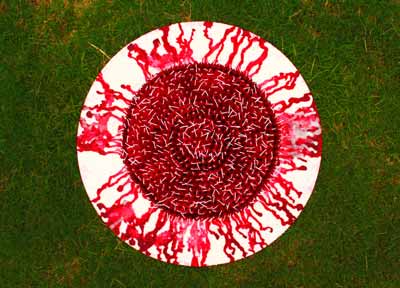Recently the National Art Gallery organised its first “salon d’été” for what would seem to be the inaugural exhibition of the new SSR municipal gallery at Quatre Bornes.
Some quick comments on the exhibition.
1. The gallery space is a refreshing new exhibition space, as compared to the usually cramped spaces that are available in the other towns. It is better than the Max Boullé in Rose Hill.
2. While we can understand that the NAG has to work for the majority of artists, the kind of ‘please one and all’ attitude it displays may eventually become its main weakness. All group shows, especially large ones with a few dozen artists suffer from the same weakness: uneven standards, with works ranging from good to quite mediocre. The organisers of the Salon de Mai of the MGI will probably tell you the same story: the main problem is to look for works of a certain level of execution that allows the overall standard to still give a good impression to the visitor. Honestly, not many works stood out of the general ‘average’ déja vu feeling, exception being made for Nirveda Alleck’s “morphology of two wasted years”.
3.It would seem that some confusion occurred over the work of Nirmal Hurry, which was not exhibited, the artist not respecting the rules. N.Hurry as per press reports would seem to have a different opinion about what happened and claims that his work was unjustly censored.
4. By trying to please everybody, the NAG may eventually end up creating more frustration because different artists seem to have different expectations about the NAG. While the more amateurish (and I do not use this term pejoratively, but to categorize those who enjoy painting as a hobby) would seem to be content to exhibit their usual landscapes, more ambitious ones who would want to create a socially relevant art of confrontation and reflection feel let down by this ‘omnibus’ type of exhibition.
5. It is a quite complex situation, and in all fairness, unless a different formula is found by Mr. Naiken and his board, frustration may keep on building up. More than ever before, the lack of a clearly enunciated cultural policy for the promotion of the visual arts is being felt.
6. The Salon de Mai type of ‘omnibus’ exhibition already exists, it has its raison d’être, and its organisers are trying hard to adapt it to new circumstances, make it more relevant to changing times. Re-utilizing the same formula seems to be a waste of time and resources.

Nirveda Alleck’s “The Morphology of two wasted years” (3 photographic prints, 50x 65cm each)







